New research: Employee advocacy and corporate social strategy are shaping B2B marketing in 2025

Table of contents
- The importance of social media in B2B marketing
- Employee advocacy: a key driver of brand visibility
- The growing role of marketing leaders and teams
- Social media presence: where do B2B companies focus?
- The value of social media tools: publishing and advocacy platforms
- Decision-making factors for social media platform selection
- Opportunities in employee advocacy, or how can yours be better?
- Social media impact on business outcomes
- Final words
As we move deeper into 2025, the power of employee advocacy and a corporate social strategy has become undeniable. This insight comes from our Q1 2025 survey, which gathered responses from 772 full-time B2B professionals across the US and UK. The research proves that these two strategies drive significant changes in B2B marketing, helping companies reach their audience more authentically and engagingly. This blog explores the latest research data highlighting the growing importance of these strategies and how B2B organizations use them to increase brand visibility, engage with customers, and generate leads.
The importance of social media in B2B marketing
Social media platforms have long been viewed as the playground for consumer brands, but now, B2B organizations are increasingly tapping into this vast ecosystem to drive results. Whether connecting with prospects, sharing thought leadership, or engaging with customers, B2B marketers see how these platforms can directly impact their business outcomes.
Our survey shows LinkedIn remains the top platform for B2B professionals, with 76% of respondents stating they actively use it. Facebook and Instagram also play significant roles, with Facebook engaging 88% of respondents across the UK and the US, and Instagram being favored by 83%. These platforms are not just for sharing casual content—they’ve become essential for distributing key business insights, promoting industry events, and even running targeted ads that build brand visibility.
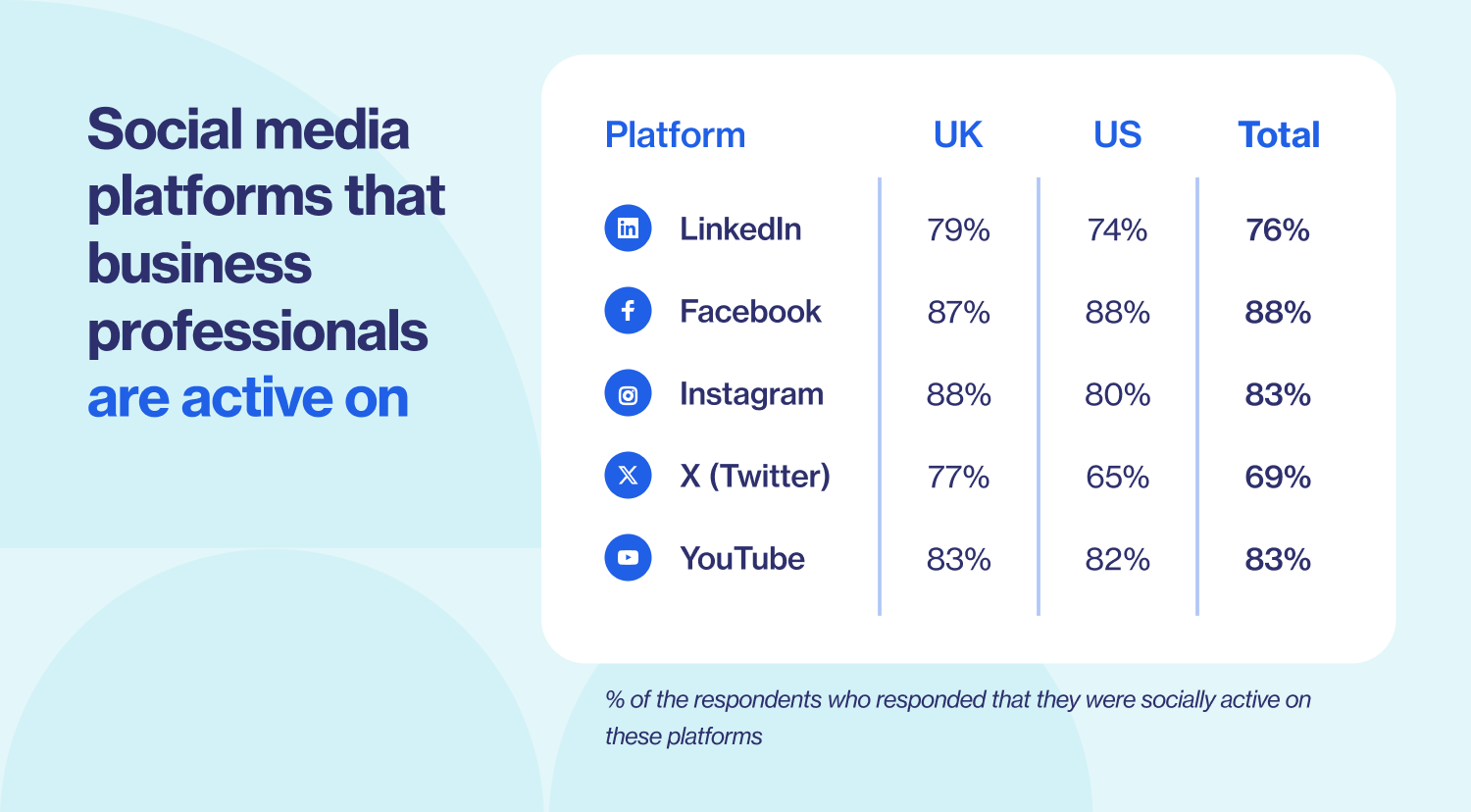
Employee advocacy: a key driver of brand visibility
Employee advocacy is one of the most effective ways to expand a brand’s reach without spending a fortune on traditional advertising. When employees share content, engage with posts, and talk about their experiences, it adds authenticity that corporate messaging cannot achieve. According to our survey, most respondents (55%) are part of organizations with active employee advocacy programs, showing how much B2B companies lean into this approach.
What’s even more exciting is that employees in the US are actively engaging at slightly lower rates than their UK counterparts, but the overall participation rate is impressive. In fact, 40% of organizations with 500+ employees have employees actively sharing posts through advocacy platforms. This shows that larger companies, with more structured programs, realize the benefits of empowering employees to act as brand ambassadors.
Recommended for further reading
The growing role of marketing leaders and teams
In the modern B2B landscape, the role of marketing leaders is critical to driving social media strategy. The survey results reveal key insights into how marketing teams are structured and the increasing importance of social media leadership within organizations.
Marketing leader’s role: Who’s leading the charge?
The survey data shows that most B2B companies have a designated marketing leader, a CMO/VP of Marketing, or a Director/Manager of Marketing.
In the UK, 44% of respondents reported that their most senior marketing leader is a Director or manager of Marketing, while 40% have a CMO or VP of Marketing.
- In the US, 41% have a Director or manager, and 36% have a CMO or VP of Marketing.
This indicates that marketing is a senior-level function in most companies. These leaders are responsible for setting and executing strategies that include social media and employee advocacy programs.
Marketing team structure: Where does the marketing team fit?
The structure of marketing teams within companies also varies by company size. Smaller companies (those with fewer than 500 employees) often have marketing teams that report to other business leaders, such as the CEO or Sales Manager. Larger organizations have dedicated marketing leaders who lead more focused and strategic marketing initiatives with larger budgets.
Here’s a breakdown based on company size:
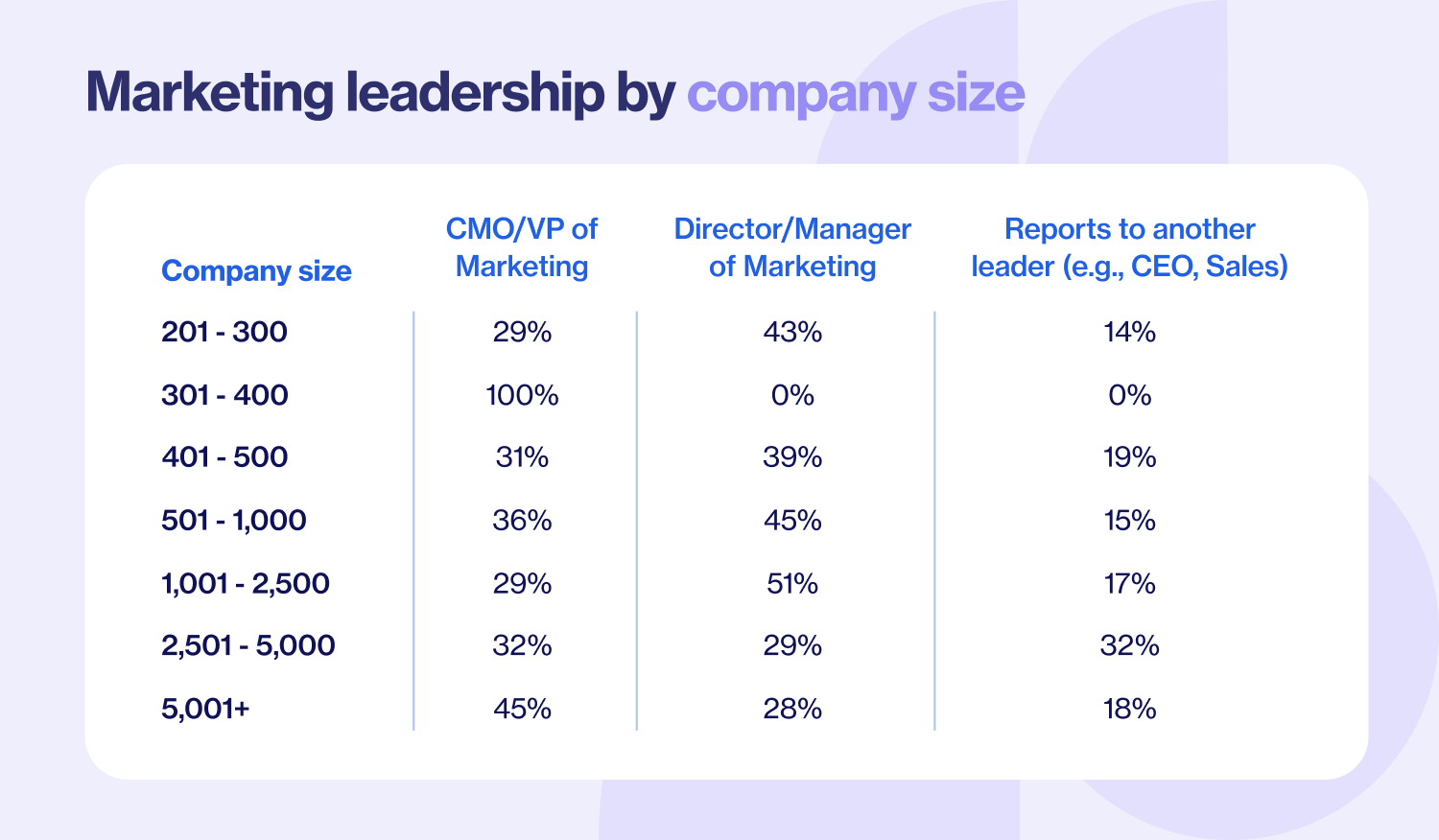
Marketing leadership by industry
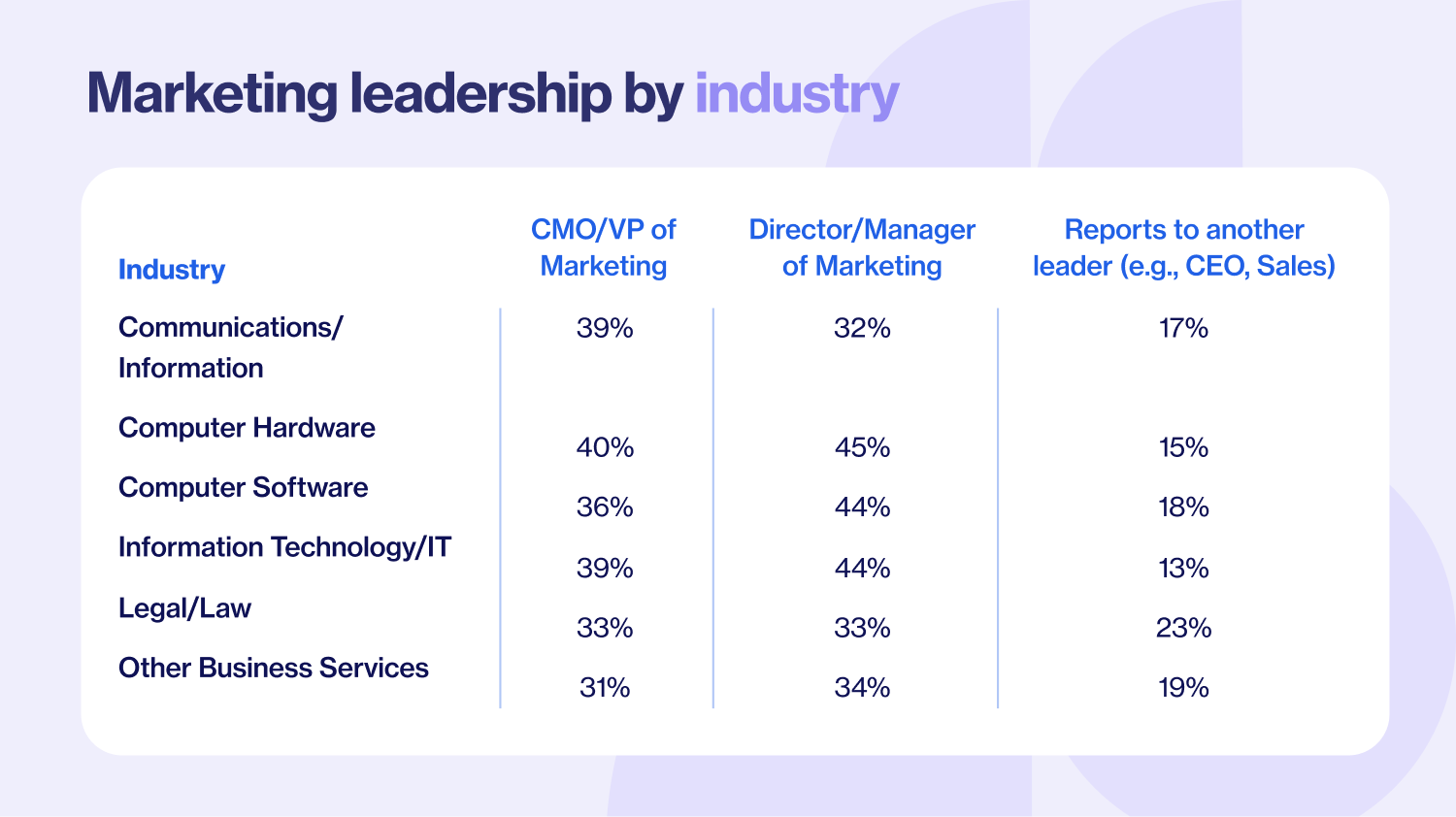
Social media presence: where do B2B companies focus?
The survey also reveals which social media platforms companies prioritize for their presence. LinkedIn continues to dominate as the preferred platform for B2B marketing, with 72% of respondents indicating that their companies maintain an active presence there. This is closely followed by Facebook and YouTube, which have a strong foothold in the B2B sector.
Interestingly, platforms like Instagram and Twitter remain important but show a slightly lower engagement level. Other platforms like Threads, Bluesky, and Reddit are emerging but play a smaller role in B2B social strategies.
Here’s how the numbers break down:
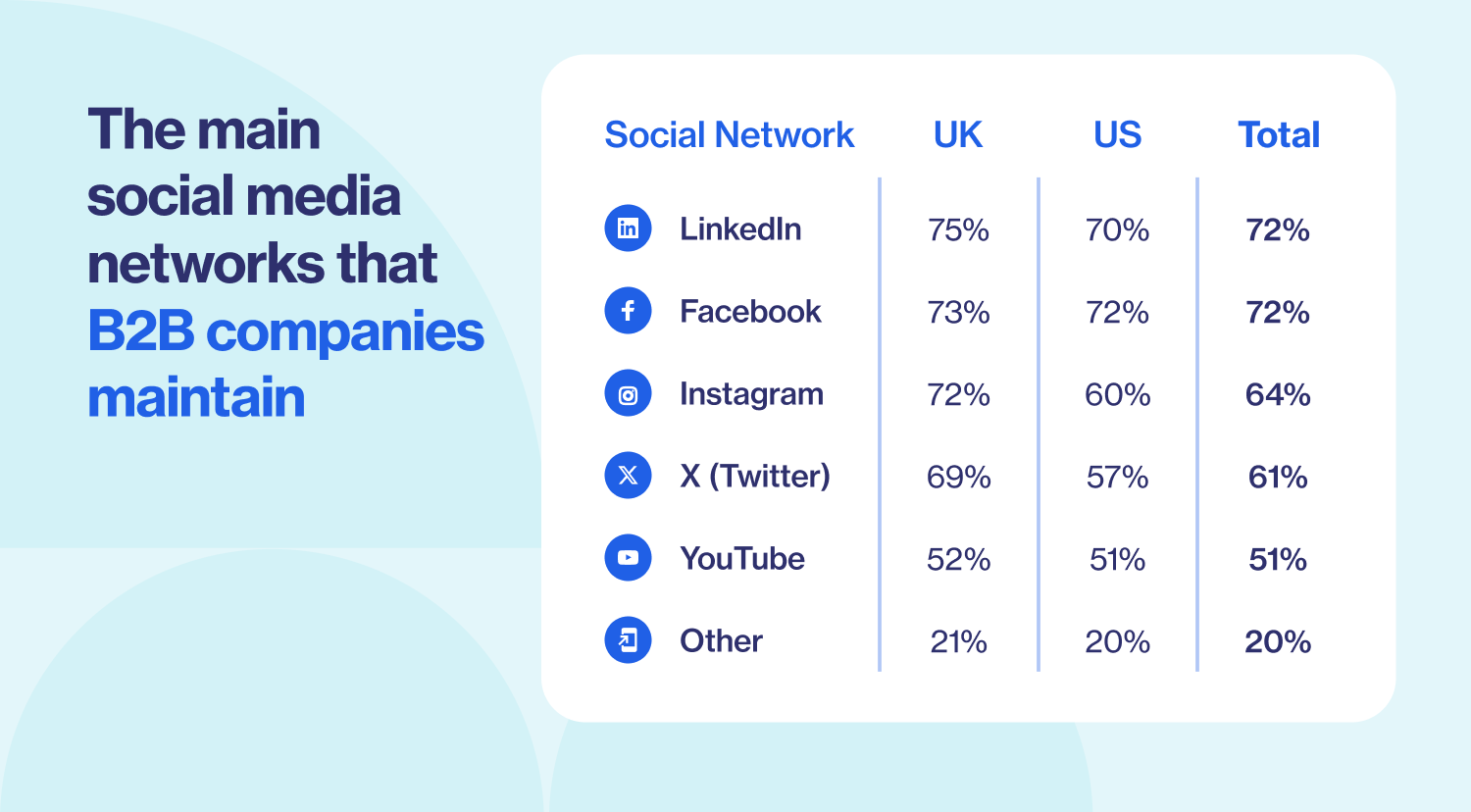
The value of social media tools: publishing and advocacy platforms
In the B2B world, the right tools can make all the difference. Social media publishing platforms allow marketing teams to schedule, manage, and analyze their content more streamlined, while employee advocacy platforms empower employees to share content on their own social media profiles. Both tools are vital for any B2B organization looking to drive engagement and measure success.
From our survey data, 54% of respondents indicated that social analytics and reporting are the most valuable features of these platforms, followed closely by integration with other marketing tools. Integrating with CRM, sales platforms, and business intelligence (BI) tools is essential for creating a cohesive and impactful social media strategy.
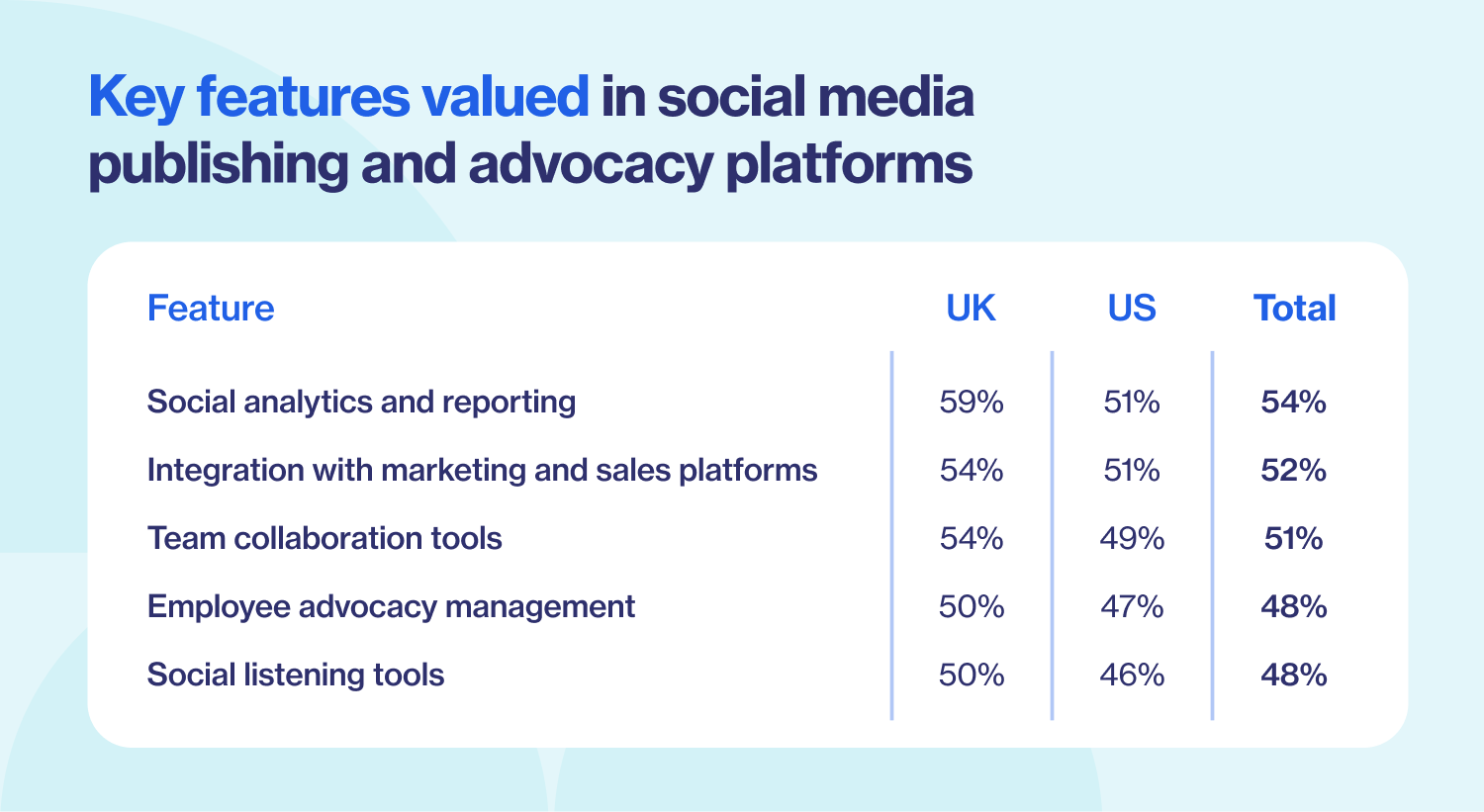
Decision-making factors for social media platform selection
B2B marketers prioritize ease of use and integration capabilities when selecting a social media platform. As companies increasingly rely on complex marketing tech stacks, the ability to integrate social media platforms with other tools, such as CRM systems or business intelligence platforms, is crucial for tracking performance and driving actionable insights.
Ease of use emerged as the most critical factor, with 59% of US and 50% of UK respondents highlighting this as a key decision driver. This highlights the growing demand for well-designed, simple-to-use platforms that enable people to focus on their work rather than figure out complex legacy-type platforms.
Opportunities in employee advocacy, or how can yours be better?
Despite the win-win benefits for employees, such as making their profiles more professional and increasing brand reach, engaging employees in advocacy programs can be challenging. Many companies still face hurdles such as low participation rates, a lack of understanding about advocacy programs, or insufficient incentives for employees to get involved. 45% of respondents said their company still struggles with employee engagement in advocacy efforts.
However, this presents a significant opportunity for growth. Organizations can increase participation and see better results from their advocacy programs by providing more training, offering incentives, and simplifying the tools for sharing content.
Social media impact on business outcomes
Social media undeniably impacts business outcomes, from increasing brand awareness to driving customer trust and generating leads. B2B companies with active social media strategies report stronger engagement, consistent lead generation, and improved brand recognition.
According to our survey, companies with active employee advocacy programs report higher brand awareness and lead generation levels, showing just how powerful it is to have employees actively share company content. Those who integrate employee advocacy into their broader social media strategy see measurable results directly contributing to business growth.
Final words
As we head further into 2025, social media activity in the B2B space is more than just a trend; it’s an essential growth strategy. Employee advocacy and a corporate social strategy have emerged as powerful tools for increasing brand visibility, fostering engagement, and driving results. The data from our survey paints a clear picture: companies that embrace social media and employee advocacy are reaping the rewards.
At Oktopost, we’re excited to see how our platform continues to help businesses leverage these strategies to build stronger, more impactful brands. Ready to level up your B2B social strategy? Let’s start the conversation today.




